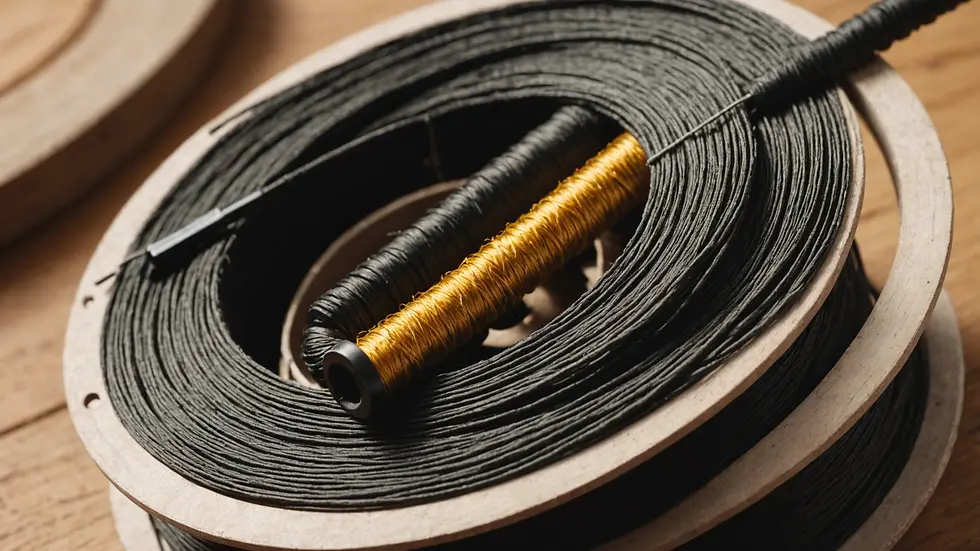How to Determine the Best Tippet Size for Your Fly Fishing Needs
- Derrick Llewellyn
- Jan 7
- 3 min read
Choosing the right tippet size is crucial in fly fishing. It may seem like a small detail, but the tippet is the thin line that connects your fly to the leader. A well-chosen tippet can lead to more bites. On the flip side, the wrong tippet can deter fish altogether. Aiming to understand how to select tippet size based on fish species, water conditions, and fly types will greatly enhance your fishing experience.
Understanding Tippet Basics
Tippet sizes are typically measured by their pound test, often indicated by their diameter in millimeters or inches. The choice of tippet size influences how your fly presents itself to the fish. For instance, using a 5X tippet, which has a diameter of about 0.25 mm, allows for a more natural drift, making it less visible in clear waters. In contrast, a thicker tippet like 2X (approximately 0.57 mm) will provide added strength to handle larger fish.
Choosing the correct tippet size can greatly influence your catch rate. Research shows that using the right tippet can improve your chances of landing fish by up to 30%.

Factors Influencing Tippet Size
Fish Species
Different fish species present unique challenges in line visibility. For example, when targeting trout in clear lakes or streams, a 5X or even 6X tippet is recommended for its lightness and invisibility. In contrast, when fishing for bass or pike, a 12-pound test tippet may be effective since these fish are generally less wary and tend to bite more aggressively.
Connecting with local anglers can provide valuable insight into effective tippet sizes for specific species. For instance, in the spring months, using a lighter tippet for trout may yield better results as their feeding is more selective.
Water Conditions
Water clarity heavily influences which tippet you should choose. In crystal-clear water, lighter tippets such as 5X allow for a stealthy presentation. If the water is murky, think about using a thicker tippet. Additionally, if you are fishing in fast-flowing water with heavy brush, a thicker tippet like 3X or 4X, which can resist snags and break-offs, is essential.
Understanding your local conditions can make a significant difference. For example, in North Carolina's mountain streams, where visibility can be low due to leaf litter, a heavier tippet might help you land fish safely.
Fly Patterns
The type of fly you use also impacts your tippet choice. For delicate dry flies, like a size 18 Adams, a lighter tippet (5X or 6X) aids in achieving a natural presentation. On the other hand, large streamers, such as a size 2 Woolly Bugger, may require a more robust 3X tippet for better support.
Additionally, the size of the fly matters. A larger fly needs a thicker tippet; for instance, a standard size 10 may work well with a 2X tippet, providing the necessary strength without overpowering the presentation.
Testing and Adjusting Tippet Sizes
Adaptability is key when it comes to tippet sizes. Start out with a general size based on fish species, water conditions, and fly types, then adjust as you observe the fish's behavior. For example, if you notice fish taking your fly but missing the hook, it might be time to switch to a finer tippet.
Experimentation will lead to learning what works best in your local waters. Keep track of what tippet sizes yield the best results in different situations, and you will become a more successful angler over time.
Mastering Tippet Selection
Selecting the ideal tippet size is a vital skill in fly fishing that could transform your success on the water. By closely examining fish species, water conditions, and fly patterns, you can significantly increase your chances of a good catch.
The essence of fly fishing lies in being adaptable. Take time to observe and learn about the waters you fish in. It's not just about fishing; it's about mastering the details. The right tippet size can be the key to making your next fishing trip truly unforgettable.




Comments